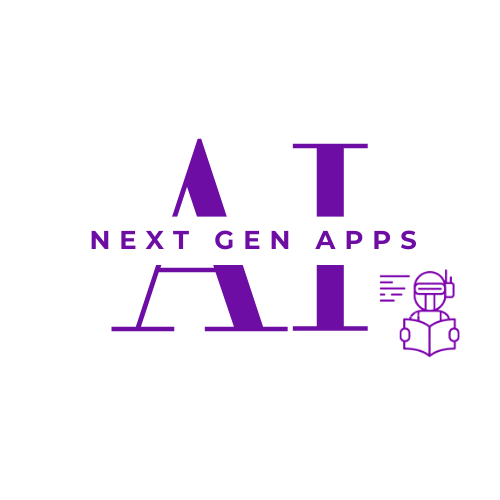The field of Artificial Intelligence (AI) is rapidly evolving, and one of the most exciting advancements is the rise of AI agents. These intelligent software programs can interact with the world around them, learn and adapt, and even collaborate with humans to complete complex tasks.
Traditionally, building AI agents has been a complex and time-consuming process. However, a new framework called LangGraph is revolutionizing the way we develop these intelligent entities.
This blog post dives deep into LangGraph, exploring its core components and how it simplifies the creation of powerful AI agents. We’ll also delve into the functionalities of Nodes, Edges, State, and Graphs within the LangGraph structure, providing a comprehensive understanding of this innovative framework.

Table of Contents
ToggleWhat are AI Agents?
AI agents are software programs that can autonomously reason, perceive their environment, and take actions to achieve specific goals. They are distinct from traditional programs as they exhibit a degree of intelligence and adaptability. Imagine a virtual assistant that can not only schedule your meetings but also proactively suggest new appointments based on your workload and preferences. Or, consider a customer service agent that can understand the nuances of human language and provide personalized support in real-time. These are just a few examples of the potential applications of AI agents.
The Challenge of Building AI Agents
Despite their vast potential, building effective AI agents has been a significant challenge for developers. Traditional approaches often rely on rigid programming, making the agents inflexible and unable to adapt to unforeseen situations. Additionally, integrating different AI tools and functionalities into a single agent can be cumbersome and error-prone.
LangGraph: A Game Changer for AI Agent Development
LangGraph emerges as a powerful solution to these challenges. It’s a framework specifically designed to simplify the creation of sophisticated AI agents. By providing a structured and intuitive way to define agent behavior, LangGraph empowers developers to build more intelligent and adaptable agents in a shorter time frame.
Understanding the Building Blocks of LangGraph
To fully comprehend LangGraph’s functionality, let’s explore its core components:
State
This represents the current knowledge and information possessed by the agent. It’s akin to the agent’s memory, storing relevant data about the environment and its past interactions. The state can be structured as a dictionary or managed within a database.
Nodes
- These are the fundamental building blocks of a LangGraph agent. They encapsulate specific computations or actions that the agent can perform. Nodes can be of various types:
- LLM Nodes: These leverage Large Language Models (LLMs) like GPT-3 or Jurassic-1 Jumbo for tasks like information retrieval, text generation, or reasoning.
- Code Nodes: Comprised of Python code snippets, these nodes enable the agent to perform specific functionalities not readily available through LLMs.
- Subgraph Nodes: These represent smaller, reusable LangGraph structures within the main agent, promoting modularity and code organization.
Edges
Edges define the flow of control within the LangGraph structure. They dictate the sequence in which the agent executes different nodes. Importantly, LangGraph allows for conditional edges, enabling the agent to dynamically choose the next node based on the current state or the outcome of the previous node.
Graph
The entire LangGraph structure can be visualized as a graph, with nodes representing computations and edges connecting them to define the execution flow.

How LangGraph Works: Building Intelligent Agents
The development process in LangGraph involves defining an agent’s behavior through its graph structure. Here’s a breakdown of the key steps:
- Define the Agent State: The initial information the agent possesses is established. This might include user input, historical data, or the current context of the situation.
- Construct the Graph: The nodes representing different computations and actions are created. These could involve querying an LLM for information, performing calculations using Python code, or accessing external data sources.
- Connect Nodes with Edges: The flow of control between nodes is defined using edges. This determines the sequential or conditional execution of tasks based on the agent’s state.
- Run the Agent: Once the graph is constructed, the agent is activated. The agent iterates through the graph, executing nodes according to the predefined edges and manipulating its state with each step.
The Advantages of LangGraph for AI Development
LangGraph offers several advantages over traditional AI agent development approaches:
- Simplified Agent Creation: The intuitive graph structure and various node types make it easier for developers to build complex agent functionalities.
- Enhanced Agent Flexibility: Conditional edges and LLM integration allow agents to adapt their behavior based on the situation and available information.
- Modular Design: Subgraph nodes promote code reusability and maintainability, making it easier to build and manage complex agents.
- Integration with Various Tools and Technologies: LangGraph seamlessly integrates with different AI tools and technologies. This allows developers to leverage the strengths of various approaches within a single agent, such as combining LLMs for language processing with code nodes for data manipulation.
- Human-in-the-Loop Workflows: LangGraph supports human intervention within the agent workflow. This enables developers to create agents where humans can review critical decisions or provide additional input during the execution process.

Real-World Applications of LangGraph
LangGraph’s versatility makes it suitable for a broad range of AI agent applications. Here are a few potential use cases:
- Customer Service Chatbots: LangGraph agents can power advanced chatbots that understand natural language, personalize interactions, and provide efficient customer support.
- Intelligent Personal Assistants: Imagine a virtual assistant that can not only schedule appointments and manage tasks but can also proactively suggest actions and anticipate your needs based on your schedule and preferences.
- Data Analysis and Insights Generation: AI agents built with LangGraph can analyze vast amounts of data, identify trends and patterns, and generate insightful reports, saving human analysts significant time and effort.
- Personalized Learning Systems: LangGraph agents can personalize educational experiences by tailoring learning materials and assessments to individual student needs and learning styles.
- Intelligent Automation in Robotics: LangGraph can empower robots to adapt to dynamic environments, make decisions on the fly, and collaborate with humans to complete complex tasks.
The Future of AI Agents with LangGraph
LangGraph is still a young framework, but it holds immense promise for the future of AI agent development. As the technology matures and integrates with even more advanced AI tools, we can expect to see even more sophisticated and intelligent agents emerge.
Here are some exciting possibilities for the future of LangGraph:
- Self-Learning Agents: Agents that can continuously learn and improve their capabilities by analyzing their interactions with the environment and user feedback.
- Explainable AI Integration: The ability for agents to explain their reasoning and decision-making processes, fostering trust and transparency in their interactions with humans.
- Multi-Agent Collaboration: The creation of complex ecosystems where multiple LangGraph agents collaborate to achieve shared goals, leading to significant advancements in areas like AI-powered simulations and large-scale problem solving.

Conclusion
LangGraph presents a paradigm shift in AI agent development. By offering a structured and flexible approach, it empowers developers to build intelligent and adaptable agents with relative ease. As LangGraph continues to evolve, we can expect to witness a new era of AI agents that transform the way we interact with technology and solve complex problems.
Ready to Explore LangGraph?
If you’re interested in learning more about LangGraph and its capabilities, here are some resources to get you started:
- LangChain Documentation: Provides in-depth information on LangChain, the foundation of LangGraph.
- LangGraph Tutorials: Several online tutorials and workshops are available to guide you through the process of building your first LangGraph agent. A quick web search for “LangGraph tutorial” should yield helpful results.
- LangGraph Community: Join online communities and forums dedicated to LangGraph to connect with other developers, share knowledge, and stay updated on the latest advancements.
With its intuitive design and powerful capabilities, LangGraph opens doors for a future filled with intelligent and versatile AI agents. Are you ready to embark on this exciting journey?
FAQs (Frequently Asked Questions)
AI agents are software programs that can reason, perceive their environment, and take actions to achieve specific goals. They are essentially intelligent assistants that can adapt and learn over time.
LangGraph is a framework specifically designed to simplify the development of sophisticated AI agents. It provides a structured and intuitive way to define agent behavior using graphs and various functional elements.
LangGraph offers several advantages, including:
- Simplified agent creation with intuitive graph structures.
- Enhanced agent flexibility through conditional logic and LLM integration.
- Modular design for easier code management and reusability.
- Seamless integration with various AI tools and technologies.
- Support for human intervention within the agent workflow.
LangGraph can be used to build a variety of intelligent agents, such as:
- Customer service chatbots
- Intelligent personal assistants
- Data analysis and insights generation tools
- Personalized learning systems
- Intelligent automation in robotics
LangGraph holds exciting potential for the future of AI agents. We can expect to see:
- Self-learning agents that continuously improve based on experience.
- Explainable AI integration for increased transparency and trust.
- Multi-agent collaboration for tackling complex problems and AI simulations.
Here are some resources to get you started:
- LangChain Documentation
- LangGraph Tutorials (search online)
- LangGraph online communities and forums
